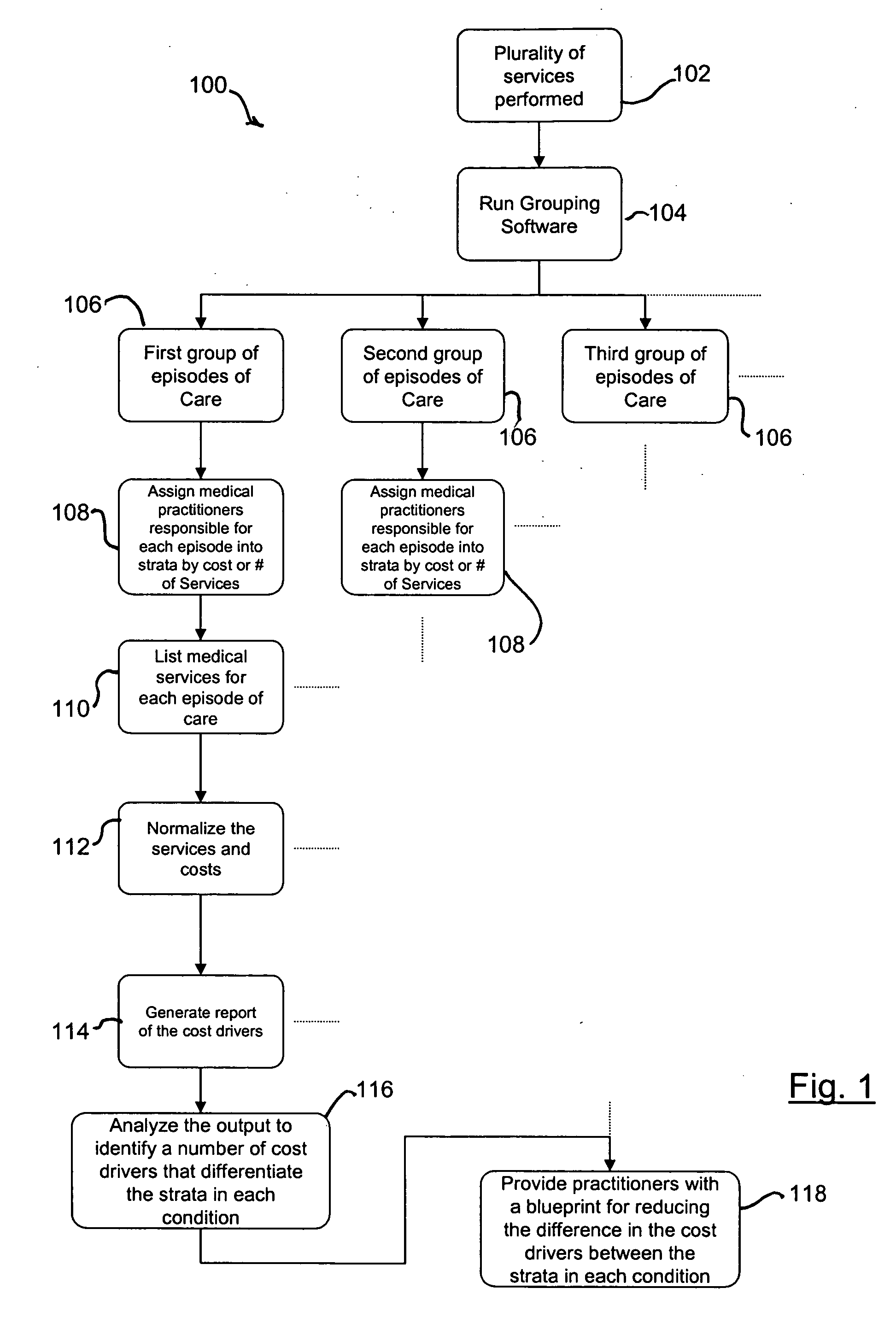Medical practice pattern tool
a pattern tool and medical technology, applied in the field of computer-implemented processes for the analysis of medical practice, can solve the problems of not taking the necessary steps, and affecting the quality of medical car
- Summary
- Abstract
- Description
- Claims
- Application Information
AI Technical Summary
Benefits of technology
Problems solved by technology
Method used
Image
Examples
example a
[0083] In an example, a number of episodes of care for the condition benign neoplasm of the skin, ETG 0682, are analyzed using the medical practice pattern tool. In this example, the medical practitioners are physicians in the specialty of dermatology associated with a medium sized regional managed care organization. The claims data input to the ETG grouper was from a period of two years.
[0084] The user chose to analyze complete episodes of care that were not cost outliers. In the data cleansing step the user had substituted uniform fees for outpatient hospital services. In choosing the top-level of groupings the user kept the Symmetry Grouper categories (ancillary, facility, management, pharmacy, and surgery) but split radiology costs out of ancillary to form a separate category. A sample of the resulting service group file 205 is shown in Table A1. Note that the data at this point contains all episodes from all ETGs for the specialty of dermatology.
[0085] In the example, the use...
example b
[0107] In further example, a number of episodes of care for the condition Allergic Rhinitis, ETG 0332, are analyzed using the medical practice pattern tool. In this example, the medical practitioners are physicians in the specialty of allergy associated with a medium sized regional managed care organization. The claims data input to the ETG grouper was from a period of two years. The system develops the practitioner episode percentage table using the output of the ETG grouper, which provides the list of physicians associated with episodes of care in ETG 0332. For each episode, the system calculates the percentage of involvement of each physician by dividing the sum of the costs of the services the physician is responsible for in that episode by the total cost of the episode. The system then calculates and stores the number of episodes for which each physician contributed to at least 25% of the cost; though, it should be noted that other attribution rules may be used. Now the system ...
PUM
 Login to View More
Login to View More Abstract
Description
Claims
Application Information
 Login to View More
Login to View More - R&D
- Intellectual Property
- Life Sciences
- Materials
- Tech Scout
- Unparalleled Data Quality
- Higher Quality Content
- 60% Fewer Hallucinations
Browse by: Latest US Patents, China's latest patents, Technical Efficacy Thesaurus, Application Domain, Technology Topic, Popular Technical Reports.
© 2025 PatSnap. All rights reserved.Legal|Privacy policy|Modern Slavery Act Transparency Statement|Sitemap|About US| Contact US: help@patsnap.com



